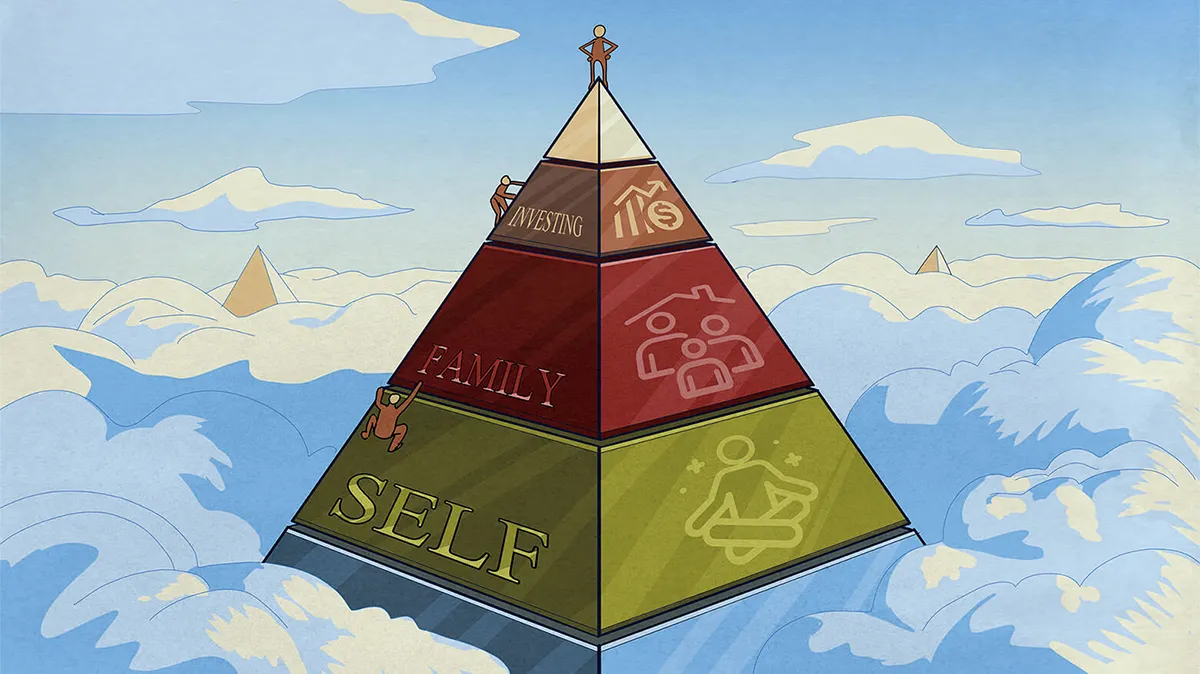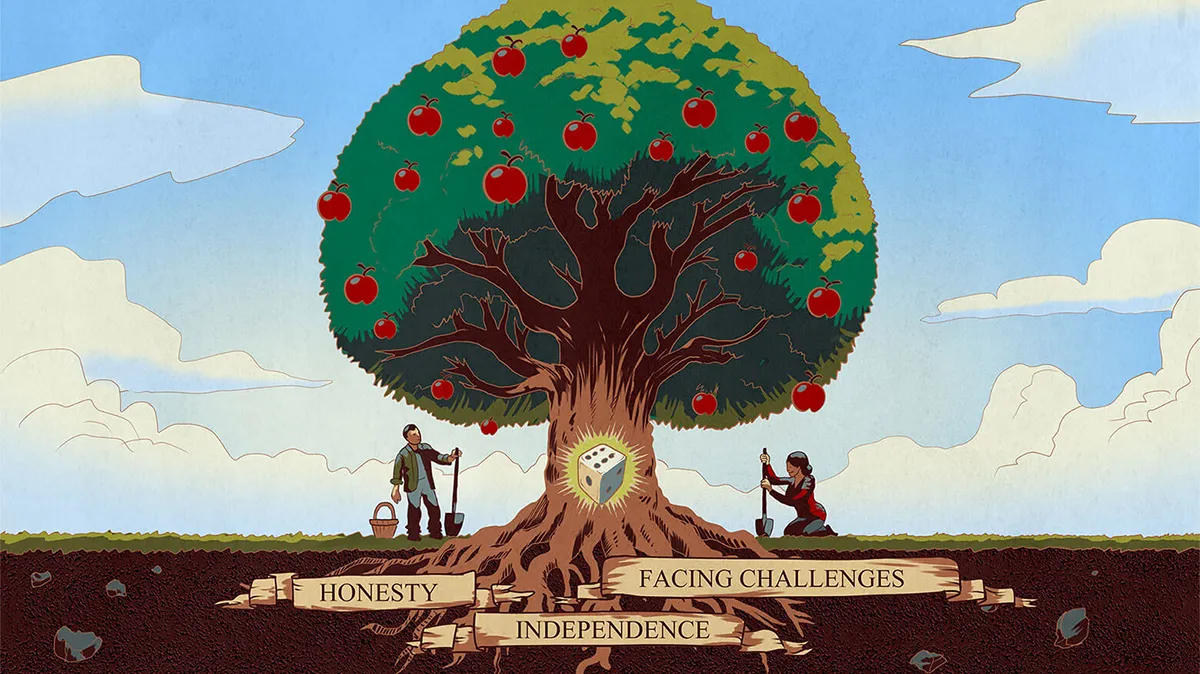I love being the CEO of IMA. I get to set the direction of the company, decide on its long-term and short-term goals, and build the IMA culture and team. I can pick the projects that interest me and outsource or delegate the ones that don’t. However, with power comes responsibility, and one task I hate doing and will not delegate is letting people go. It is the hardest, most unpleasant thing I have to do as CEO.
What makes it worse is that the people I have let go were not bad people. They did not do anything bad. They did not steal or insult clients. It was just that not long after I made the decision to hire them, I had to fire them. My decision was wrong. They were not right for the job.
On one level, firing someone is telling them, you don’t belong here. You are not good enough for us. That’s the wrong way to look at it – and we’ll get to that a bit later – but in that moment you are causing the person a sea of pain. It may be short-term pain, but it’s still pain. That is the last thing I ever want to do. Of course, there are other costs: financial costs and lost productivity across the firm. But it is the emotional cost – causing someone pain and impacting the ecosystem of the team – that made me reassess our hiring process and create a new one.
I see today, as I look back objectively at our original hiring process, that we were destined for failure. We advertised a job. We filtered out people based on their having a semblance of relevant experience. We conducted a series of individual or group interviews. We checked references. The one we “liked,” we hired.
Everything we do at IMA is process-driven. We have very thorough research, operations, client services, and marketing processes. Everything and anything we do more than once we put into a process. IMA is a small firm, and we don’t hire new folks very often. The last two full-time people I hired were a director of operations and an analyst. Hiring the director of operations was easy. A friend who runs a good-sized value investing firm learned that I was looking for talent, reached out to me, and bluntly told me that if I didn’t hire Lisa, who had worked as COO of his firm for a few decades, I’d be making the biggest hiring mistake in my life. Lisa and I had a twenty-minute conversation on the phone. I hired her on the spot. Hiring Lisa goes 100% in the good luck category.
A year later I looked for a research analyst. This time I had a very thorough process. I wrote a lengthy essay on this hiring process. Here is a small excerpt from it:
There was only one factor that really mattered to me this time – passion.
Yes, passion!
Investing, though it can be an incredibly intellectually stimulating and rewarding endeavor, can also be (and often is) very frustrating. Thoroughly researched and well-thought-out decisions don’t always result in the expected outcomes (you can thank Mother Randomness for that). But even when decisions do pan out, the time from gestation to fruition may be years.
Passion is the fuel that keeps a diehard, process-driven value investor going through the times when the markets are divorced from reality, when it feels like you are living Einstein’s definition of insanity – doing the same thing over and over again and expecting a different outcome.
There is a saying in basketball: You cannot teach height. In investing, you cannot teach passion.
How do you screen for passion? You put up very high walls, and only the ones who have passion will climb them. I asked for the following from the candidates: List the books you’ve read over last twelve months (not limited to just investment books); give us a sample of a stock idea analysis; write a few paragraphs about two people (dead or alive) who impacted you the most and tell us why; tell us about three books that have impacted you the most and why; and finally, write us a cover letter to tell us why we’d be making the biggest mistake of our professional lives by not hiring you.
We received four dozen applications. Most of them just had standard cover letters and resumes. I completely ignored those. A dozen climbed the wall and answered all the questions I asked. I interviewed a handful of them. There was one candidate who was a mile above everyone else – Brendan. He did not have a traditional background, but I was impressed by the thoughtfulness of his analysis and answers. I could tell Brendan was dripping with passion. He was literally reading companies’ annual reports for breakfast. I am sure luck played a role with this hire, too, but luck was supplemented by a thorough process.
Back to firing. The last person I fired, I knew that I made a mistake in hiring three days after they started, but it took me 17 days to make sure that I was not making a mistake in firing them. After I let them go, I could sense that the whole IMA team was traumatized – these decisions impact everyone at a small firm. I decided to put the hiring process on ice for a week. Then, when we reviewed our hiring process, we realized that we didn’t have a process. We had something that looked like a process, but it wasn’t. If our investment process had looked like our hiring process, we wouldn’t have lasted one more bear market. We needed to build a new process, and I realized we had a lot of learning to do. I asked my friends and clients who run businesses about their hiring processes. I ended up talking to about two dozen people.
A friend recommended the book Who, by Geoff Smart and Randy Street. I read it and found it very useful. Another friend recommended I hire a consultant that would help us evaluate each person’s fit to IMA and the job by giving candidates personality and aptitude tests. He told me that he didn’t do any hiring without these tests and found that they reduced his hiring failure rate tremendously. I asked around about personality tests, and everyone spoke highly of them. I was still skeptical but decided to talk to the consultant. The consultant recommended that every employee at IMA complete the tests, so we all did. We found that the results accurately described everyone at IMA, including a person I knew intimately – yours truly.
Let me slow down for a minute to explain this a bit more.
If you look at the IMA team members, they all share some universal qualities: They are genuinely good, highly ethical people; they are team players (more on that in a bit); and they are fun to work with. I’d be delighted to be with any of them on a 13-hour flight to New Zealand. They all care deeply about IMA. They have soul in the game. These qualities are not incidental, they are part of our culture.
Aside from these universal qualities, our team members are all very different. They have strengths and weaknesses. I like to look at strengths as superpowers and weaknesses as a power source of superpowers. The word weakness has an unnecessarily negative connotation. Many weaknesses are just sources of strength – you just have to give up the weakness to get the strength.
My job as CEO is to identify every employee’s superpowers, and the power source of those superpowers (that is, their weaknesses), and then make sure they are given tasks where the superpower is used to the fullest. Often, they are paired up with a team member with a skillset to offset their weakness. Peter Drucker summed it up brilliantly in Managing Oneself: “It takes far more energy and work to improve from incompetence to mediocrity than it takes to improve from first-rate performance to excellence.”
Personality tests reveal qualities a candidate may or may not know about themselves and their fitness for a job. A good fit increases the odds (though it doesn’t guarantee) that the person we hire will be good at the job and will receive satisfaction from it, and thus will stay with us longer. The consultant we hired mapped out the personality of a person who would best fit in job we were looking to fill.
Keeping in mind the positive impacts of utilizing personality and aptitude tests, but wanting to go beyond them, I gave the book Who to Brendan and told him, “Read it and build a data-driven hiring process.”
Every applicant that we even were remotely interested in was sent the personality and aptitude tests. We felt that the aptitude test was important, because one of candidates that I had to let go showed, in addition to other issues, an inability to learn. The ones who passed the tests to our satisfaction (only about 20%) moved on to the next step – a ten-minute, recorded video interview with Brendan.
While we were researching the hiring process I had stumbled onto an interview with Nobel Prize laureate and father of behavioral finance Daniel Kahneman. He said: “Interviews should be structured. You have to break up the problem into attributes of the candidate and score each attribute sequentially…. The simplest thing is to list the attributes of the job before you interview. Pick maybe half a dozen traits needed to succeed, whether punctuality, technical skill, even anger management. Then think of questions that can help you determine if candidates have these attributes. List the questions for each trait and score each trait, maybe from one to 10, before moving to the next. Ask the same questions, in the same order, of each candidate.”
We followed Kahneman’s advice to a tee. Our team came up with 10 questions. Every recorded interview was independently graded by every team member, then we averaged the scores. Giving a grade to each answer made the discussion about each candidate a little more nuanced and less binary.
Candidates who passed this stage were given two additional tests: to write a short summary of one of my articles and to carry out a copyediting/grammar assignment. We were genuinely interested in their ability to perform these tasks well, but we also added another significant wall for a candidate to climb: Candidates who passed that stage were moved to an in-person team interview.
What we learned from our past failed hiring experiences was that the people we interviewed were not the same people who showed up to work. Interviewing for a job is not unlike going on a first date – you want the other person to like you. You don’t necessarily lie about your past (though we found that some candidates did), but you omit or embellish certain details. The goal of the in-person team interview was to remove the embellishments and to truly understand who we were hiring.
Brendan – who in addition to being an analyst was now wearing the hat of IMA hiring manager (the beauty of working for a small firm) – conducted the interviews, working from a set list of questions. Unlike the interviews of our two failed hires, which took only 20 minutes, these interviews took at least two hours.
The candidate’s resume served as the jumping-off point for the interview. Brendan zoomed in on each past job. He made sure he got the name and the spelling of each direct manager and supervisor the candidate had at each job. One important point that we took from the book Who was to make sure to ask about past jobs in this way: “When we talk to your manager, [insert first and last name], how will he rate your performance, or what will he say your strengths and weaknesses are?” The key here is to make a candidate feel that anything they say will be checked with the manager they used to work for. Brendan went thoroughly through every job, asking a half dozen questions, and the team followed up with additional questions as needed.
I have to admit, this job interview felt a bit like the interview I went through with an Israeli border agent when I first arrived in Israel. It was very polite, but the shiny, superficial varnish of a first date was gone. I distinctly remember not enjoying it. I am sure our candidates enjoyed it even less, but it was necessary. By getting down to brass tacks with our candidates, we came to understand a lot better who we were hiring.
Again, after the interview each team member rated each candidate on predetermined criteria. Once we agreed on the candidate that was the best fit, Brendan asked him or her to provide references; but in addition to standard references, he asked for the phone numbers and emails of past supervisors. We called each reference and asked them a series of questions, but the main question was, would you hire this person again?
One thing I’ve learned, being a reference for the army of interns IMA has employed over the years, is that when I am excited about the person for whom I am providing the reference, it will show in my voice. I’ll volunteer how great that person is, and I’ll be their biggest cheerleader. When someone was an okay intern, I’ll say positive things, but my voice will be missing that excitement. When we are doing reference checks, we listen carefully to how the person is talking about the candidate, not just what they are saying about her or him.
I conduct the final interview. I invite the candidate to come to our office. I tell the person to wear comfortable shoes and clothes. I clear my morning, and we go for a walk in the park (which may end up being a three-hour walk). In one case we were hiring a person who in a few years would be doing Lisa’s job. It was a very important decision. Our walk turned into a real two-way conversation – it lacked the formality of the Israel border-crossing interrogation we had conducted with the candidate a few days earlier. I wanted to see if I genuinely liked the person we were about to hire. I wanted to know what made him tick as a human being. Walking in the park also brought his guard down, and I could get a better, deeper sense of the person I was about to ask to join our team.
We ended up hiring Cyrus. We could not have hired a better person for the job. Aside from Cyrus being a wonderful human being, this job is a perfect fit for his personality – it fits him like a glove.
When I talk to my friends and clients about their experience in hiring people, most tell me that it’s a crapshoot. The process I described above is just a beta version that will improve every time we go through hiring a new person. I also realize that while we may have reduced the element of randomness, we have not eliminated it – after all, we are hiring humans, not robots. I’d like to say that this process completely removed subjectivity from our hiring. It didn’t, but we reduced it by not just relying on a candidate’s resume and the impression they made during the first date – sorry, I mean interview. Now when we hire, the decisions are based on a lot more data that we diligently gather through tests, assignments, and in-depth structured interviews.









0 comments